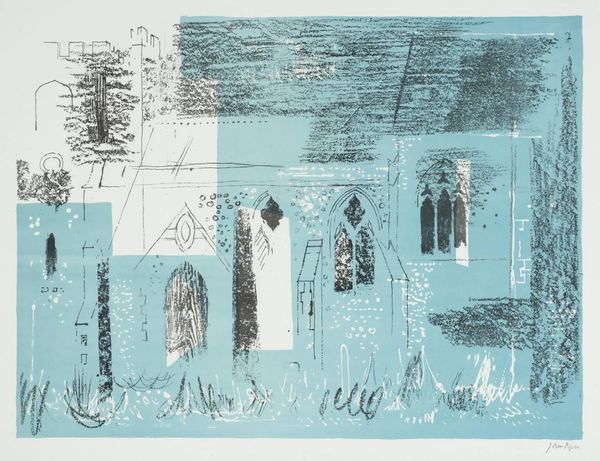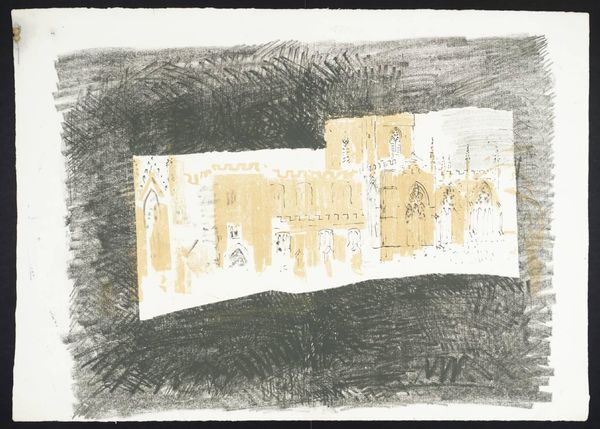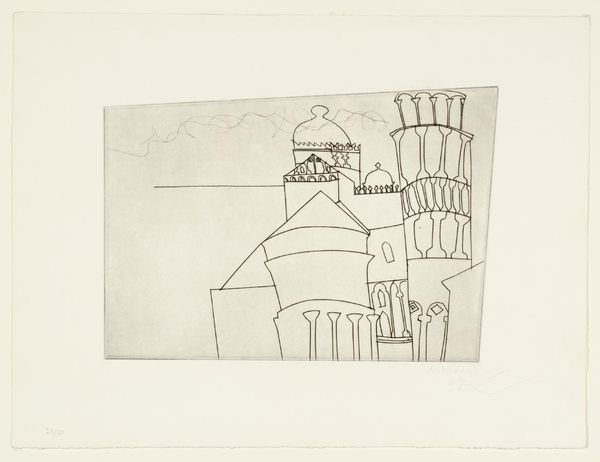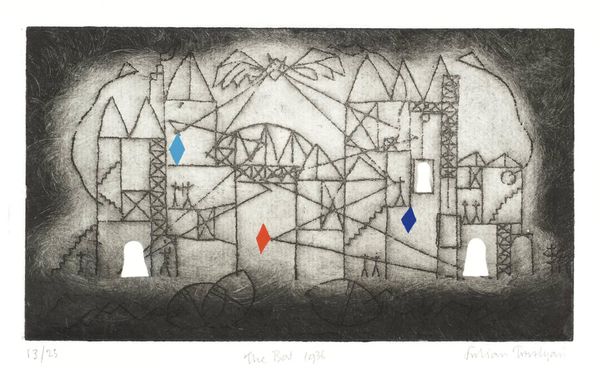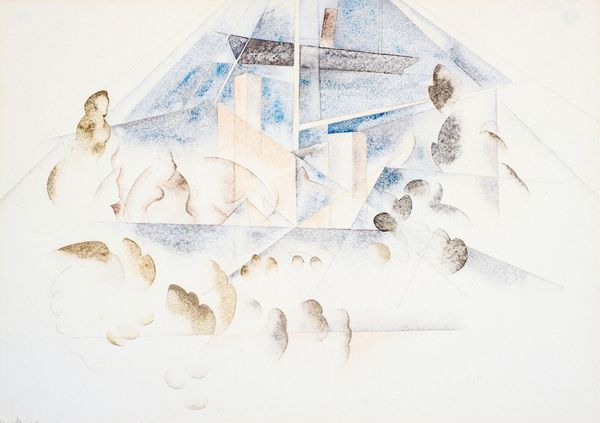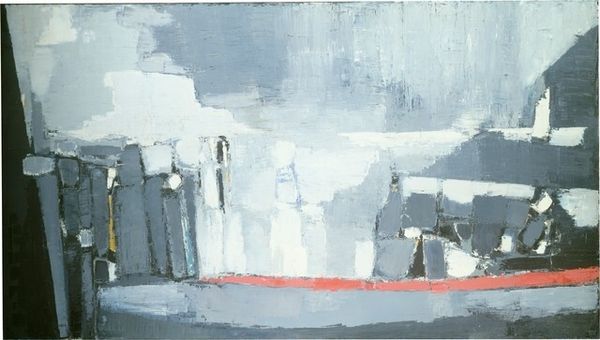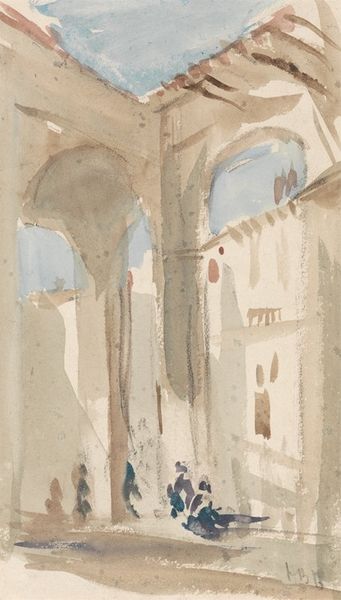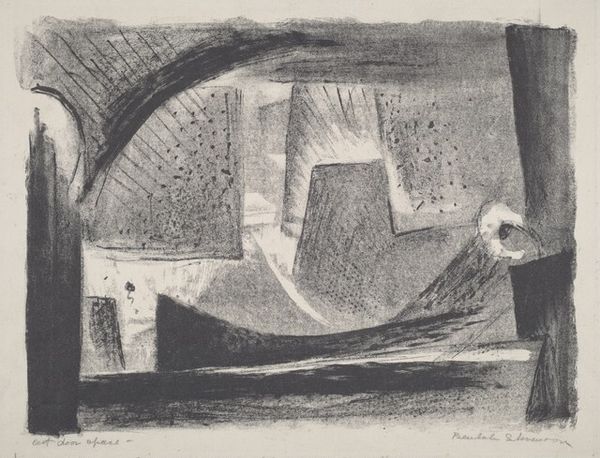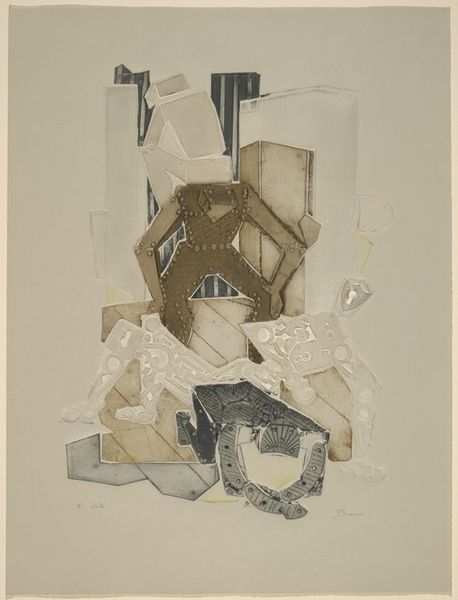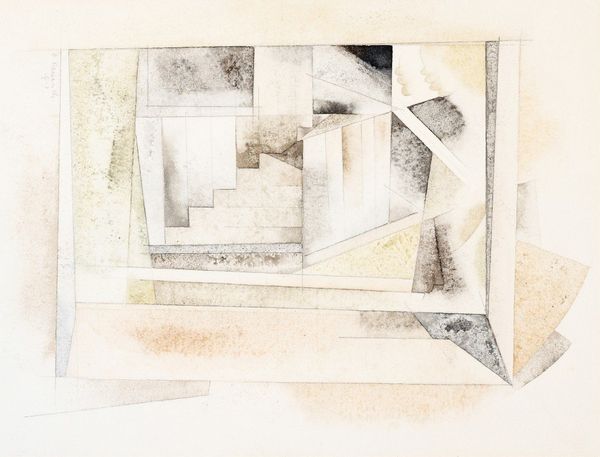
mixed-media, print
#
mixed-media
# print
#
landscape
#
painted
#
figuration
#
geometric
Dimensions: image: 325 x 420 mm (irregular) sheet: 458 x 585 mm
Copyright: National Gallery of Art: CC0 1.0
Editor: We’re looking at “The Triangle,” a mixed-media print by Franz Bergmann from the 1940s. The figures have an almost childlike simplicity, yet the architecture suggests something ancient. How do you interpret this work? Curator: It’s interesting you mention the childlike quality because it juxtaposes starkly with the weighty historical implications simmering beneath the surface. Looking at it through a contemporary lens, the simplified forms invite us to deconstruct power structures, specifically those present in early to mid 20th century Europe. Consider the geometric rigidity versus the fluid human forms. Does that tension spark any thoughts for you? Editor: Yes, actually! It’s like the figures are trapped within or subservient to the architecture. There is one central figure on an animal, and other solitary figures positioned on the sides as decoration. Is that a deliberate social commentary on the elite versus the people? Curator: Absolutely! The geometric composition seems to impose order, but perhaps at the cost of individual freedom. And the ghostly presence of those figures hints at vulnerability. In the shadow of historical events unfolding in the 40s, think about how Bergmann uses visual vocabulary of geometric shapes to portray authoritarian systems and its dehumanization, or perhaps its effects on civilians? What are your thoughts on the color choices and the overall quietness of the image? Editor: They're very muted, almost faded, which lends a feeling of distance, or things being obscured. Almost like the figures cannot reach what is up above. Curator: Exactly! The limited palette might subtly reflect on the restrictions of the era. The art becomes a critique, almost a form of silent protest. The "Triangle" perhaps isn't just a geometric shape, but also symbol of social structures. Editor: It is all making much more sense now! It's amazing how a seemingly simple image can contain so much. Thank you for opening my eyes to its layered meanings. Curator: The beauty of art lies in this kind of constant re-evaluation, situating past creations in light of our present moment, ensuring that art continues its relevance in discussions surrounding freedom, social power, and what it means to be human.
Comments
No comments
Be the first to comment and join the conversation on the ultimate creative platform.

